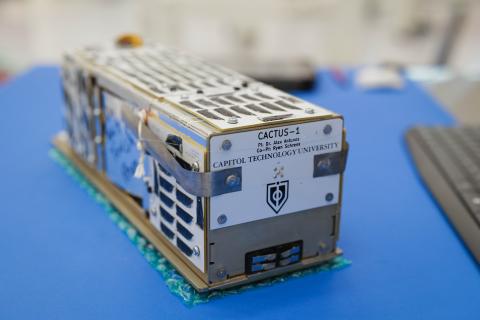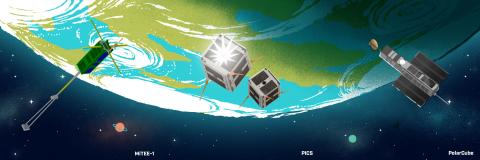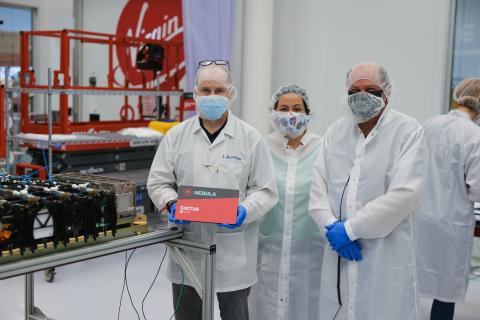Cactus-1: A CubeSat's Next Steps
March 2, 2021By Dr. Alex "Sandy" Antunes
Five years ago Capitol Tech was awarded a NASA CubeSat Launch Initiative 'free launch' via Virgin Orbit for any science payload we could build—as long as it fit into a 30cm x 10cm x 10cm '3U' CubeSat frame. Oh, and we had to build the frame as well. And the test gear, comms system, solar panels, and a ground system. In short, it had a lot of parts. As a result, over 30 students got to participate in Capitol Tech's Cactus-1 (Coordinated Applied Capitol Technology University Satellite 1) CubeSat project over its 3 year build cycle.
And then we waited for launch... and waited. The original students (a mix of all majors) graduated and moved into successful careers. Our launch date arrived, slipped, arrived again. But once we had a fixed launch date, a new cadre of students stepped up to learn how to communicate with and send commands to Cactus-1, and hopefully get some data back down.
In under a semester, the team of 4 (Charis Houson, Seth Dickerson, Devon Marshall, and Bryce Dickey) went from novices to near-expert in satellite communications and all things Cactus-y. Cybersecurity and engineering adjunct professors Rick Hansen and Vijay Kowtha took notice and brought in their skills and even more students to help. Alumni & Co-Investigator Ryan Schrenk came back into the project to ramp this up.
On January 17 2021, Virgin Orbit successfully launched Cactus-1 along with 8 other CubeSat missions into its 550km altitude orbit! And the next phase began-- the ground game. Cactus-1 orbits every 90 minutes, and as the Earth rotates beneath it, it's specifically overhead Capitol about twice a day, for 10 minutes at a time. That's our window to try to contact it.
Our hope is, within the first 3 months, to establish communications with Cactus-1. That's the mission now. As of 30 days in, we have no contact yet, but we expected a slow rollout and are upgrading our transmitters. Our students have gone outside on three evenings to attempt to contact Cactus-1 at its licensed 434.03MHZ radio frequency, but because we were using a transmitting system at the lower end of our allowed power, we're also upgrading to higher power command attempts this month.
Beyond questions of transmitter power, there's also listening capability. We have allies tapped from the amateur radio community plus the SatNOGS automated tracking radio network, and are looking to get help from former Capitol Tech professor Dr. Chuck Conner over at Moorhead State University.
Finally, there's the finesse aspect—communicating with an object 550 kilometers up and moving at 7 kilometers per second is hard! Cactus-1 is normally quiet and only 'talks' when we tell it to. We designed it to only active commanding, so as to comply with FCC shut-down requirements (we erred on the side of caution, probably overly cautious). If no commands are received in 14 days, Cactus-1 will 'beacon' for 1 day, so even if our ground station transmit is weak we should get health-and-safety status messages (at 434.03MHz) via our ground listening partners at that time and every 14 days after. So, we have a recurrent window and every two weeks, another opportunity to improve our 'ground game'.
We're using Cactus-1 as an excuse to train up a new bunch of students on space communications and space cybersecurity, so there's some great hands-on learning with our ground system roll up. Professor Hansen in cybersecurity is particularly interested in taking possession of Cactus-1 for space/cyber teaching possibilities.
AMSAT's Jerry Buxton of the RadFxSat-2 mission put it best, in a team chat: "I see two kinds of people who succeed in their missions: Winners, and Learners. The ELaNa XX mission teams are all successful!"
Cactus-1 served Capitol Tech well as a flagship project, and now the prospect of Cybersecurity and Engineering, particularly Astronautical Engineering, joint opportunities shows that Capitol Tech is always creating new challenges for our students.
Click here for more information on Cactus-1, the launch, and the work that went on behind the scenes to create this payload.





